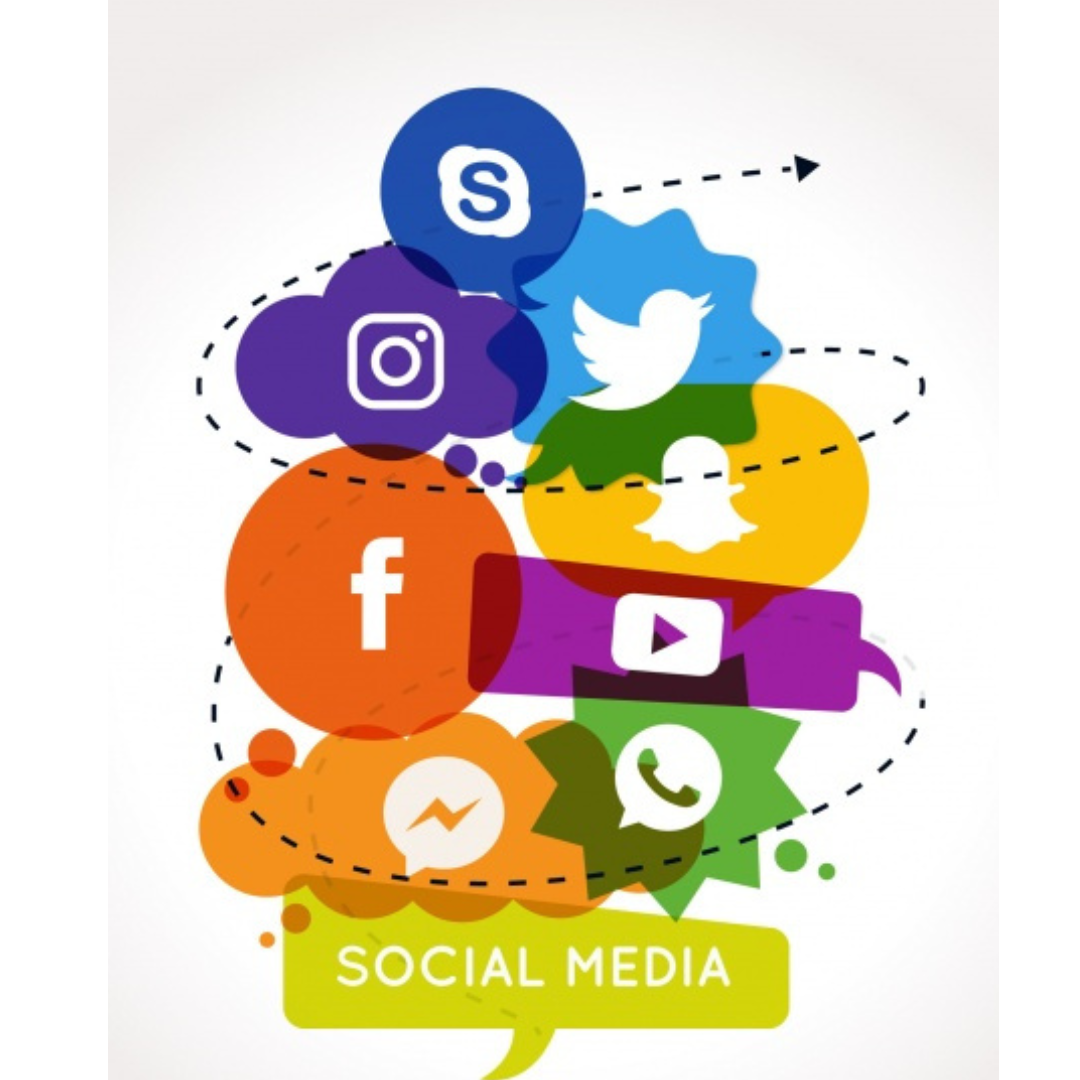5 best Social Media Management tools for free.
- Social Champ
- Hootsuite
- Buffer
- Canva
- Tailwind
1- Socialchamp
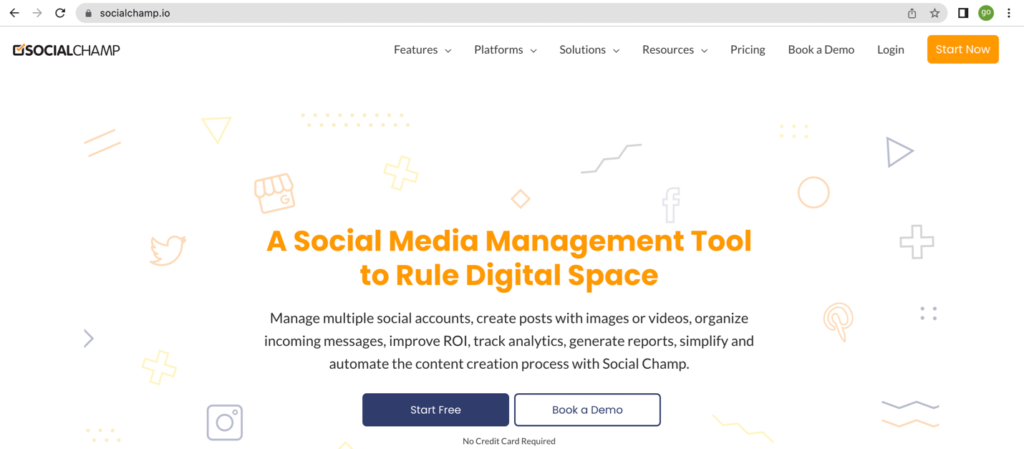
Social Champ is a FREE one-stop digital solution for social media management and automation to streamline all the major social media networks. Social Champ is the best way to manage your all social media efforts, day-to-day posting, A/B testing, and optimization. Social Champ brings all the automation you need to schedule your social media content. Analyze post performances and see what works best for your brand and get results in white-labeled PDF reports or export a formatted PPT ready to present. Engage with your audiences right away from the Social Inbox. Other major features include day-to-day posting, content optimization, bulk upload, automated RSS feed, team management, and a lot more. The tool has already received positive reviews, from social media influencers such as Guy Kawasaki, Peg Fitzpatrick, Dennis Yu, Ian Anderson Gray, Neal Schaffer, and many more.
2- HootSuite
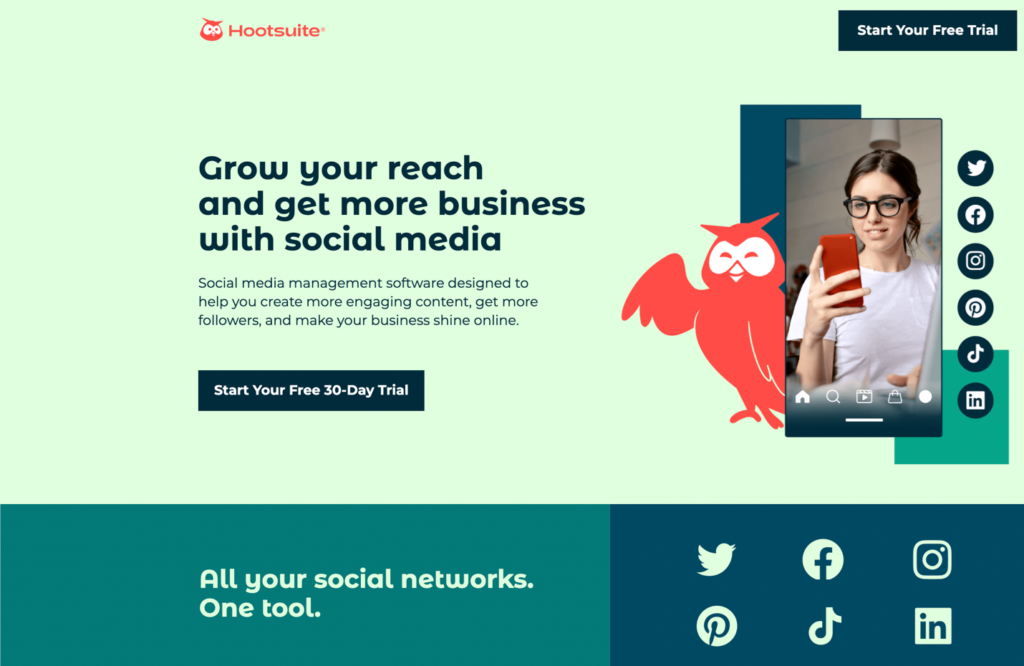
https://www.hootsuite.com/socialmedia/analytics
HootSuite is a social media management tool that allows users to schedule and post updates to Facebook, Twitter, LinkedIn, Instagram, WordPress, and other platforms from a dashboard with tabs organizing all the social profiles you connect. Users can implement and analyze marketing campaigns across all social profiles without signing in to each social network individually. With premium accounts, users get advanced social analytics, audience engagement, team collaboration, and security feature. If you’re posting the same thing across multiple profiles, you can post it once through HootSuite and select the profiles where you want it published, and it will publish it on all five profiles at once. Using HootSuite takes a bit of time to get familiar with, but, in the end, it improves productivity and leaves time for more important things. The scheduling feature is nifty, too. Spread your posts out over the day or a week so you can set it and forget it. If you’re serious about social media management and analytics, you can get a 30-day free trial of HootSuite Pro, which costs about $29 a month after that and allows one user to manage up to 10 social profiles. There are also options for teams, businesses, and enterprises.
3- Buffer
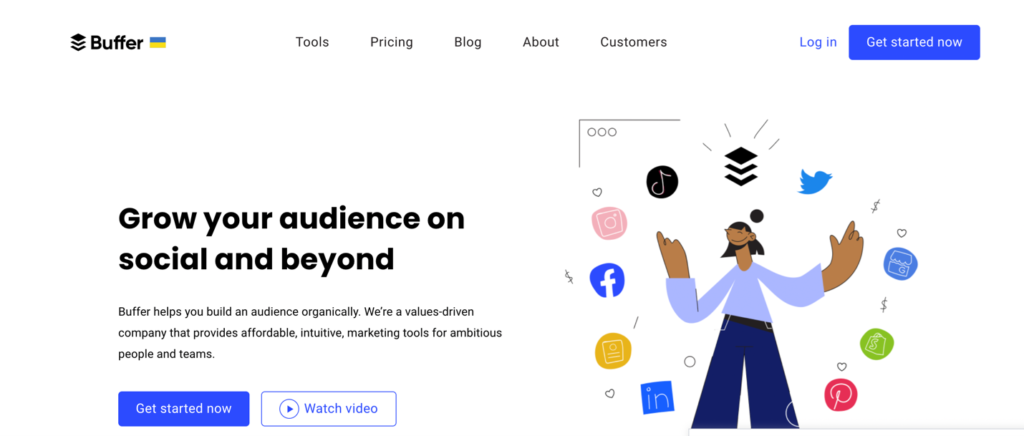
https://buffer.com
Buffer (also known as “Bufferapp”) is a multi-purpose social media marketing software tool. Buffer’s core feature is the ability to draft and schedule posts for sharing across multiple social networks including Facebook, Instagram, Twitter, LinkedIn and Pinterest. Buffer also offers social media reporting and monitoring functionality. Buffer.com is actually divided into three separate groups of features. In many ways, each of these are different products. Although, if you sign up for all 3, you can link them together and click over to each one in the navigation bar. Buffer Analytics: their social media reporting suite. Here’s where you can see how your social media posts are performing. You can analyze each platform one-by-one or get all of your social media performance data combined.
4- Canva

https://www.canva.com/
Canva is your free photo editor and video editor in one graphic design app! Create stunning social media posts, videos, cards, flyers, photo collages & more. Stand out with one-tap animations and fun music for Insta stories and video collages. No design experience or expertise? No problem! From photo editor to collage maker, to logo maker – we made Canva really simple & easy for anyone in the world to design.
5- Tailwind
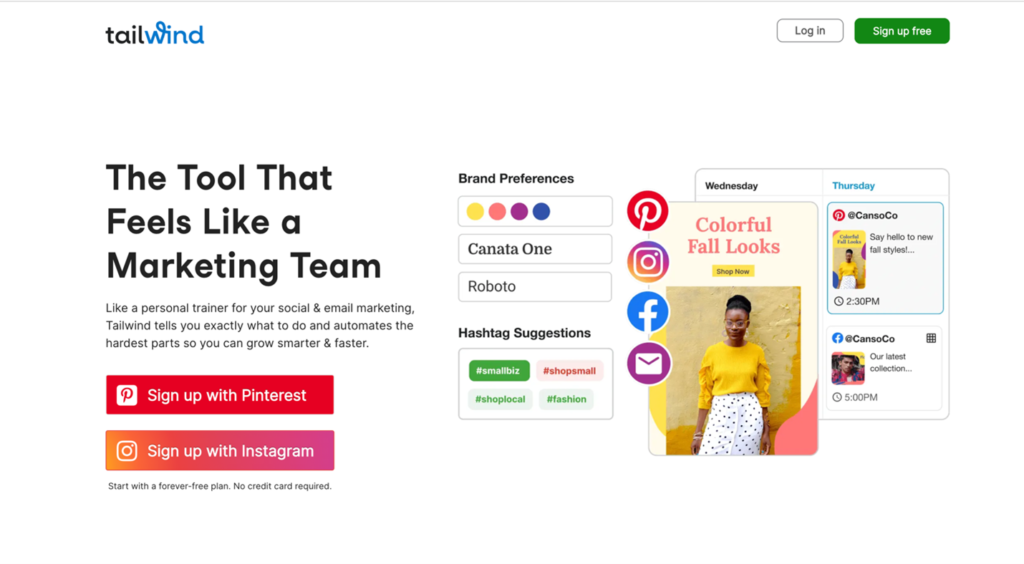
https://www.tailwindapp.com/
The smart marketing assistant that automates social media design, scheduling, & analytics. Tailwind automates the difficult parts of your social media marketing. Grow Your Business. Learn Instagram Marketing. Services: E commerce Marketing, Small Business Marketing.
Read more on Godigital@Medium
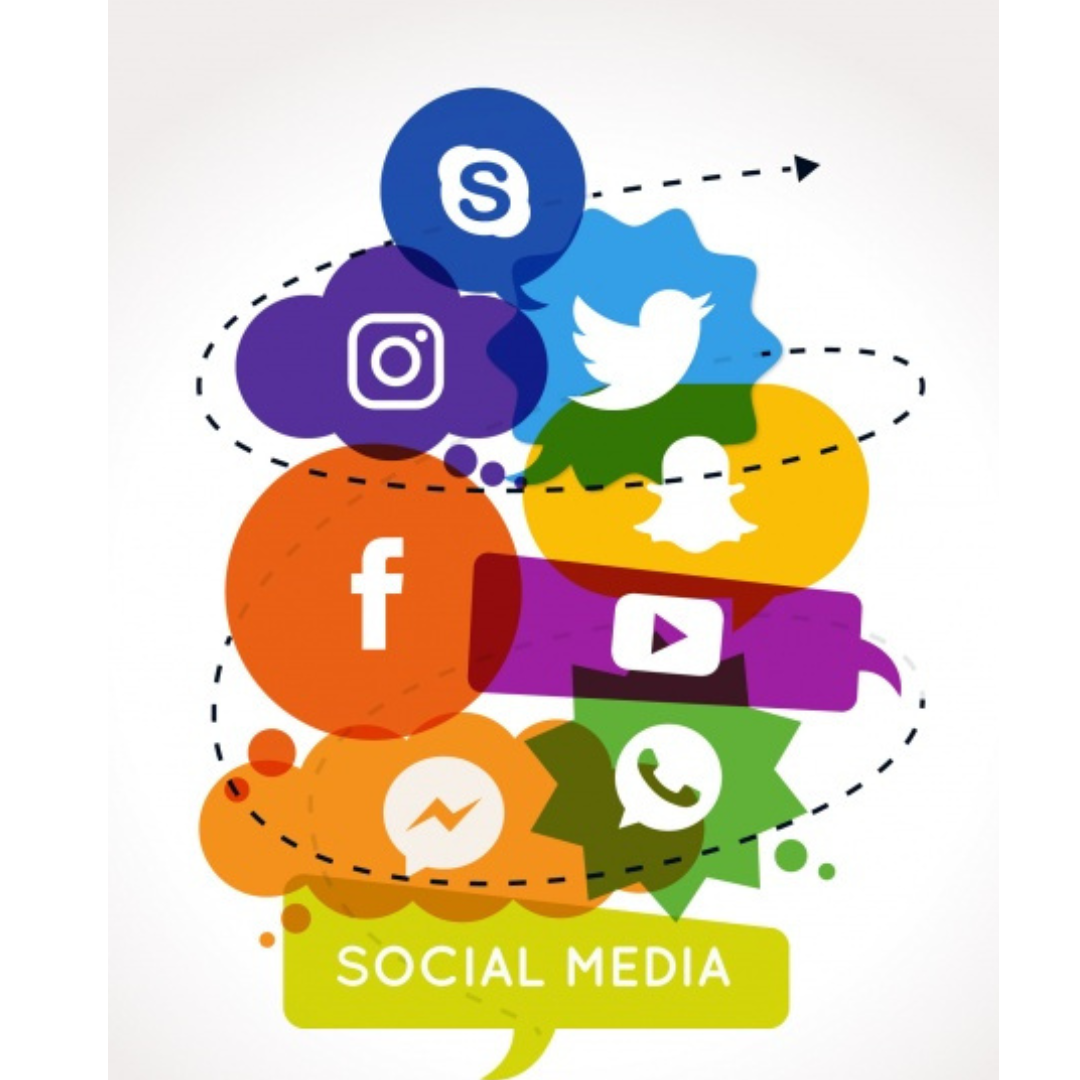
Use Hashtags to Increase Your Reach on Social Media.
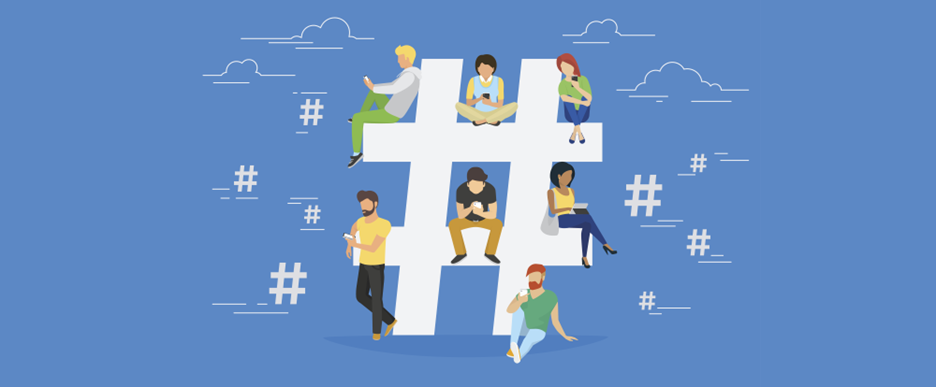
What Is a Hashtag?
You’ve probably heard of a hashtag (#). Well, hashtags have found a new function in the 21st century. Now, you can tag social media content using hashtags. This enables other users to see a collection of related content when they click on the hashtag. You simply put the # sign in front of the words you want to use. For example, if you are an events company you might tag #eventmanagement or #eventorganizers when you post an image of the different events.
Why Use Hashtags?
Hashtags improve the user experience and help brands widen their reach. For instance, Tweets with hashtags get twice the engagement than Tweets without. Hashtags as part of your universal social media strategy can help you easily secure 21% more engagement. Target audience looking for event planners can click on the various hashtags mentioned in this post to see collections of images on Instagram that are related to one another. Hashtags are a handy way to organize content on social media. They help prospective customers and users find what they are looking for.
Which Hashtags Are Suitable for Your Brand?
Hashtags are customized and unique to each business. It’s important to stick to this philosophy. An event organizing business wouldn’t want to mislead customers and users by posting about an awards event using the hashtag #artificialintelligence. Some people mistakenly believe that spamming each of their posts with popular, but completely unrelated hashtags will help them improve their reach. This might be true in the short term, but ultimately if your hashtags aren’t at least tangentially related to the subject of your post or other content, you might end up alienating and confusing your audience. So, the best hashtags to use are those that relate to your industry, product, and target audience. You may also use hashtags to signal your business’s beliefs and values in a succinct way. Some brands opt to do this in their social media profiles. To find good hashtags, take a look at what other businesses in your industry are using. On many platforms, the auto-fill hashtag feature generates related hashtags automatically when you type even just the beginning of a word or phrase. For example, as you create a post, type in #shoes, and many platforms will automatically generate related hashtags. You can also use our Social Media Tracker to see what hashtags are performing best for your competitors. This will save a huge amount of time on choosing the best hashtags for your exact industry. The Social Media Tracker lets you compare your social media performance to that of your competitors. One way to source hashtags is by checking the “hashtag” tab in this tool.
How to Use Hashtags on Your Social Media Platforms
Each platform has slightly different best practices when it comes to hashtags. There are also some consistent hashtag rules across most platforms:
- Hashtags must be one word.
- Numbers are allowed.
- Spaces are not allowed
- Special characters are not allowed

Let’s take a look at how you can leverage them to improve your reach across the most common social media sites.
While you can have 30 hashtags on each of your Instagram posts, that is not necessarily the best use of your time or the hashtag function. A good rule of thumb is no more than a dozen hashtags per post. There are a few ways to use hashtags on Instagram. You can put hashtags in your profile description (see below). To do this, simply click on the “Edit profile” button.

The second place to put hashtags is in your post itself (see below). All you have to do is use the # symbol in your caption, followed by the tag you want to link to.

Finally, you can add them to a comment on the posts you create. If a user is looking at your Instagram from a desktop, they will see this comment. However, if a user is on a mobile device, this comment will be hidden and only accessible if someone clicks “View all comments.” One way to approach this strategy is by using our Social Media Poster to preschedule the comment to appear once you make your post. This way you can schedule all of your comment hashtags at the same time you create your posts. This feature only works on Instagram for now, but stay tuned! On the Social Media Poster tool you can designate a “1st comment” to appear with your prescheduled post. This makes including hashtags in a comment an easy task.
While Facebook has the option to add hashtags, they are nowhere near as popular as they are on other platforms. In fact, debate is ongoing about whether hashtags do much of anything on Facebook. Some experts and business owners say they do; others say it hasn’t had much of an impact. With that in mind, use your time wisely by limiting hashtags on Facebook to just one to two per post.
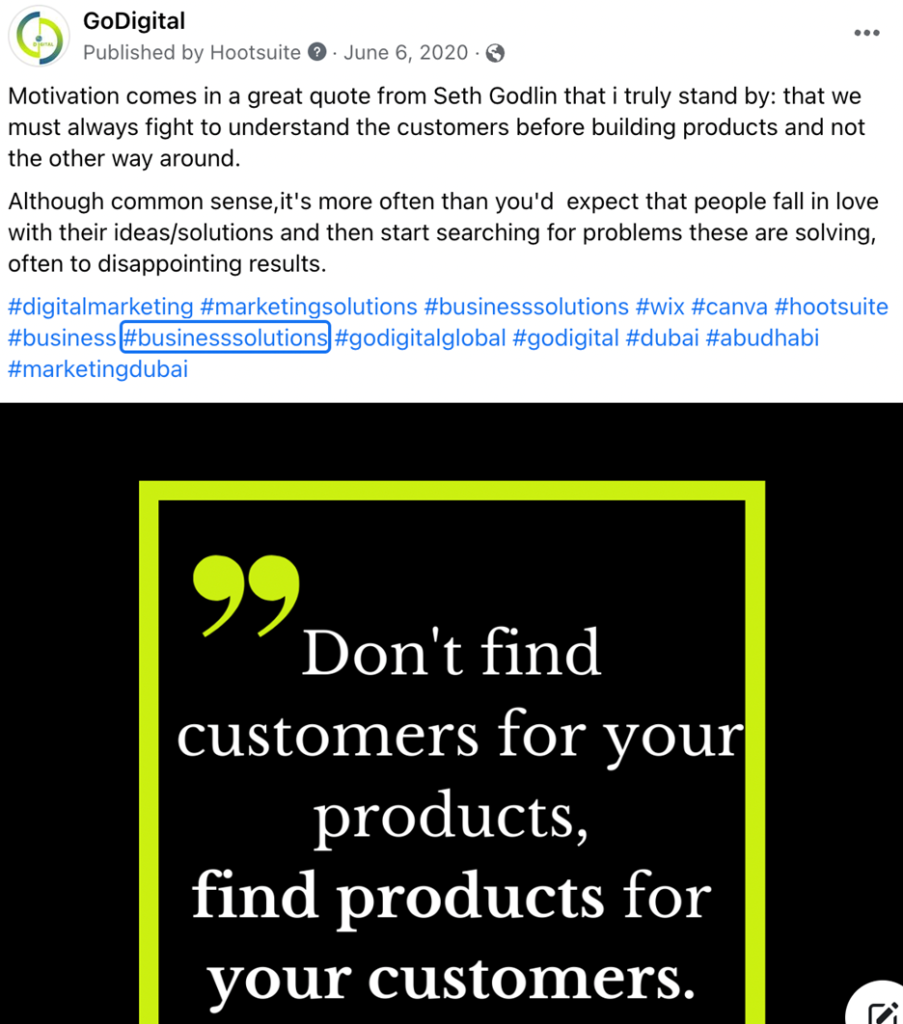
Twitter is the fore bearer of hashtags and perhaps the most popular spot to use them. However, using hashtags on advertising Tweets can be tricky and may have the opposite intended effect (meaning: you might not be driving the kind of engagement you want). Because of this, a best practice tip is to use hashtags in Tweets that start a conversation. This is better for organic reach, and it encourages users to engage with you on social media. You can use a hashtag within a sentence, or at the end of one, for the most straightforward approach. Twitter user Dieter Bohn asks a fun and cheeky question as he waits in line at Google. By putting #GoogleIO at the end of his Tweet, he is connecting with other people on Twitter who are having conversations about GoogleIO. (Source: User Dieter Bohn on Twitter) Twitter recommends that you use no more than two hashtags per Tweet for the best engagement rates.
LinkedIn makes using hashtags a breeze. When you create a LinkedIn update (post), you can either add your hashtags directly to your content or click “Add hashtags” at the bottom of your post (see below for a desktop example). There is no limit to how many hashtags you can use; however, LinkedIn recommends no more than three per post. Remember that LinkedIn is a network for professionals, so make sure that your hashtags reflect the nature of the platform and don’t contain any inappropriate language.
TikTok
TikTok, which allows users to post videos up to ten minutes long, saw tremendous growth in its user base in the last several years. Like other social platforms, TikTok uses hashtags to organize content and make it more easily discoverable. TikTok is slightly unique in that users tend to mix highly popular hashtags with more niche hashtags, or branded hashtags, that are likely to draw in a smaller but more invested audience. An example of this would be Nike using #FYP (For You Page, which is the TikTok-curated feed) and #JustDoIt.
How to Find and Organize Your Hashtags
One great way to source well-performing hashtags is to look at what your competitors are using. Semrush’s Social Media toolkit allows you to look into your competition’s best-performing hashtags, so you can start targeting them yourself. Once you know which hashtags you want to use, the Semrush Poster can schedule your social media posts with the correct hashtags. That way, you don’t have to manage multiple posts across multiple platforms all by yourself. Start getting creative with your messaging. Finding niche hashtags that speak directly to your audience about their problems or questions can endear users to your brand before they have a chance to find your competition.
Read more on Godigital@Medium
